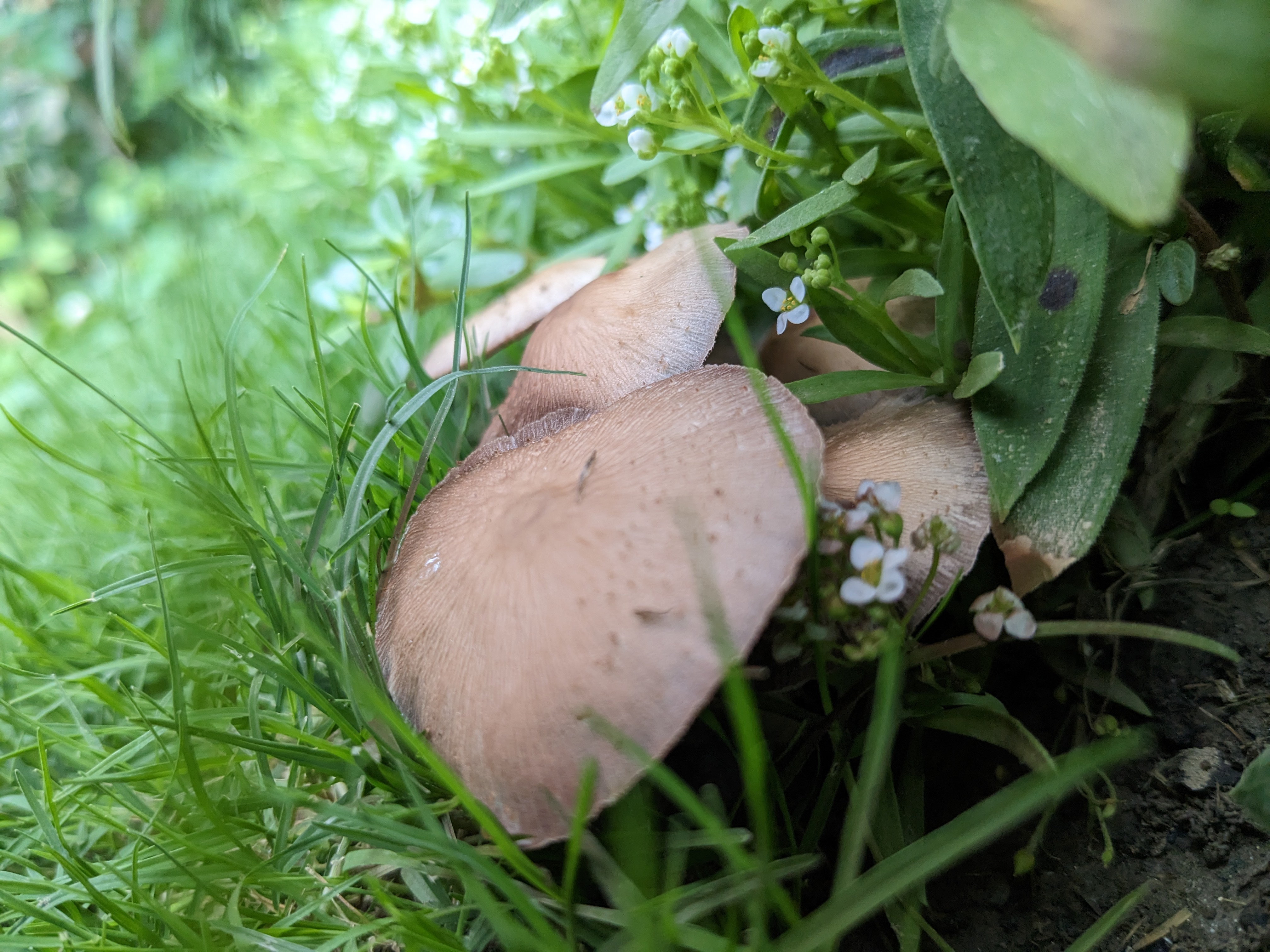
The implications of Human-Chatbot interaction
Alina Minhas - 28 Nov 2023

The implications of Human-Chatbot interaction
Definition of chatbotsGrowing use of chatbots in various domainsHuman-Chatbot InteractionsTypes of interactions (spoken, written, visual)Benefits of human-like interactionsPsychological Impacts of ChatbotsEmotional support and companionshipReduction of social isolation and lonelinessCognitive and behavioral changesEthical ConsiderationsThe potential for dependence and over-reliance on chatbotsPrivacy and data security concernsFuture TrendsAdvancements in natural language processing and artificial intelligenceIntegration of chatbots into mental health treatment plansLegal ConcernsEnsuring ethical use of chatbots in mental healthProtecting user privacy and data

Pros and Cons of AI-Generated Music
IntroductionThe transformative impact of artificial intelligence (AI) on the music industry.AI used recently to create the last Beatles songAdvantages of AI MusicDemocratization of music production, making it accessible to all.Quick and efficient music generation, eliminating copyright issues.Personalized compositions based on individual preferences.Concerns and ChallengesPotential impact on human artists and unique artistic expression.Complex legal questions regarding copyright ownership.AI's limited understanding of cultural context and emotional nuances.The Harmonious CoexistenceStriving for a balance where AI enhances the music industry rather than undermines it.AI as a tool to streamline the creative process for artists.Personalized listening experiences based on user preferences.

Pros and Cons of AI-Generated Music
Alina Minhas - 27 Nov 2023
IntroductionThe transformative impact of artificial intelligence (AI) on the music industry.AI used recently to create the last Beatles songAdvantages of AI MusicDemocratization of music production, making it accessible to all.Quick and efficient music generation, eliminating copyright issues.Personalized compositions based on individual preferences.Concerns and ChallengesPotential impact on human artists and unique artistic expression.Complex legal questions regarding copyright ownership.AI's limited understanding of cultural context and emotional nuances.The Harmonious CoexistenceStriving for a balance where AI enhances the music industry rather than undermines it.AI as a tool to streamline the creative process for artists.Personalized listening experiences based on user preferences.

AI: Your Professional Ally in the Digital Age
Alina Minhas - 27 Nov 2023
Introduction:Emphasis on the potential of AI in enhancing the professional landscapeInnovations making way for opportunitiesThe positive impact of AI tools across various industries. AI Tools and Their Impact on Industries:Discuss how AI tools are revolutionizing industries like healthcare, finance, and manufacturing.Explore examples of AI-powered technologies such as machine learning, automation, and data analytics. Displacement and Adaptation:Addressing concerns regarding job displacement due to AI.Highlighting how professionals can adapt by upskilling and embracing new roles created by AI.Exploring the concept of human-AI collaboration in the workplace. Debates and Concerns Surrounding AI:Ethical considerations and biases in AI systems.Analyzing the potential impact of AI on privacy, security, and job markets.Include perspectives from experts and industry leaders. The Need for Education and Adaptability:The importance of education and continuous learning to stay relevant in the AI-driven world.Highlighting the need for professionals to embrace adaptability and develop skills that complement AI technologies.Discussing the role of organizations and educational institutions in preparing professionals for the future.

How to garden
Umair Khalil - 27 Nov 2023
Step by step process:Get SeedThrow it on the ground (soil)Water it as long as you canDone

AI and Healthcare
Alina Minhas - 27 Nov 2023
AI is changing the game in healthcare, from diagnostics to personalized treatment and patient care. It's a powerful tool that enhances disease diagnosis, offering more accuracy, reducing errors, and speeding up the process. For instance, AI can assist in identifying diseases like breast cancer and skin cancer, even outperforming human experts. It can also help in optimizing drug dosages, reducing side effects, and enhancing the effectiveness of treatments. Furthermore, AI plays a crucial role in population health management, predicting disease outbreaks and identifying high-risk patients, ultimately saving costs and improving patient outcomes.But the impact of AI doesn't stop there; it's transforming patient care too. Virtual health assistants and mental health support systems offer personalized care and improve patient engagement. AI chatbots help patients with medical advice, appointment scheduling, and even monitoring vital signs, making healthcare more accessible. Additionally, AI can enhance patient education by providing tailored information and guidance, empowering patients to take control of their health. The future of healthcare is being shaped by AI, promising better accuracy, efficiency, and patient-centered care. However, challenges like data accuracy, privacy, and maintaining a human touch must be addressed as AI continues to evolve and revolutionize the healthcare industry.

Betta fish
Umair Khalil - 24 Nov 2023
The Siamese fighting fish (Betta splendens), commonly known as the betta,[2] is a freshwater fish native to Southeast Asia, namely Cambodia, Laos, Myanmar, Malaysia, Indonesia, Thailand, and Vietnam.[3][4] It is one of 73 species of the genus Betta, but the only one eponymously called "betta", owing to its global popularity as a pet; Betta splendens are among the most popular aquarium fish in the world, due to their diverse and colorful morphology and relatively low maintenance.[5][6]Siamese fighting fish are endemic to the central plain of Thailand, where they were first domesticated at least 1,000 years ago, among the longest of any fish.[6][7][8] They were initially bred for aggression and subject to gambling matches akin to cockfighting. Bettas became known outside Thailand through King Rama III (1788–1851), who is said to have given some to Theodore Cantor, a Danish physician, zoologist, and botanist.[7][failed verification] They first appeared in the West in the late 19th century, and within decades became popular as ornamental fish. B. splendens long history of selective breeding has produced a wide variety of coloration and finnage, earning it the moniker, "designer fish of the aquatic world".[9]Bettas are well known for being highly territorial, with males prone to attacking each other if housed in the same tank; without a means of escape, this will usually result in the death of one or both fish. Female bettas can also become territorial towards one another in confined spaces.[10] Bettas are exceptionally tolerant of low oxygen levels and poor water quality, owing to their special labyrinth organ, a characteristic unique to the suborder Anabantoidei that allows for the intake of surface air.[11]In addition to its worldwide popularity, the Siamese fighting fish is the national aquatic animal of Thailand,[12][13] which remains the primary breeder and exporter of bettas for the global aquarium market. Despite their abundance as pets, B. splendens is listed as "vulnerable" by the IUCN, due to increasing pollution and habitat destruction.Outside Southeast Asia, the name "betta" is used specifically to describe B. splendens, despite the term scientifically applying to the entire genus, which includes B. splendens and at least 72 other species. Betta splendens is more accurately called by its scientific name or "Siamese fighting fish" to avoid confusion with the other members of the genus.English-speakers often pronounce betta as "bay-tuh", after the second letter in the Greek alphabet. However, it is believed the name is derived from the Malay word ikan betta, with ikan meaning "fish" and bettah referring to an ancient warrior tribe, which is pronounced "bet-tah".[14][15] Alternative sources suggests the name Betta splendens is formed from two languages, consisting of Malay for "enduring fish" and the Latin word for shining.[16]Another vernacular name for Siamese fighting fish is plakat, often applied to the short-finned ornamental strains, which is derived from the Thai word pla kat (Thai: ปลากัด), which literally means "biting fish". This name is used in Thailand for all members of the Betta genus, which share similar aggressive tendencies, rather than for any specific strain of the Siamese fighting fish. Thus, the term "fighting fish" is used to generalise all Betta species besides the Siamese fighting fish.[17][18]Siamese fighting fish were originally given the scientific name Macropodus pugnax in 1849—literally "aggressive fish with big feet", likely in reference to their elongated pelvic fins.[15] In 1897 they were identified with the genus Betta and became known as Betta pugnax, referring to their aggressiveness. In 1909, the species was finally renamed Betta splendens upon the discovery that an existing species was already named pugnax.[15]B. splendens usually grows to a length of about 6–8 cm (2.4–3.1 in).[19] Although aquarium specimens are widely known for their brilliant colours and large, flowing fins, the natural coloration of B. splendens is generally green, brown and grey, while the fins are short; wild fish exhibit strong colours only when agitated. In captivity, Siamese fighting fish have been selectively bred to display a vibrant array of colours and tail types.[20][21]Rice paddies are believed to have been the first point of contact between bettas and humans.According to Witte and Schmidt (1992), Betta splendens is native to Southeast Asia, including the northern Malay Peninsula, central and eastern Thailand, Kampuchea (Cambodia), and southern Vietnam. Based on Vidthayanon (2013), a Thai ichthyologist and senior researcher of biodiversity at WWF Thailand, the species is endemic to Thailand, from the Mae Khlong to Chao Phraya basins, the eastern slope of the Cardamom mountains (Cambodia), and from the Isthmus of Kra. Similarly, a report from Froese and Pauly (2019) identifies Betta splendens as native to Cambodia, Laos, Thailand, and Vietnam.[4][22] They are also found throughout the neighbouring Malay Peninsula and in adjacent parts of Sumatra, likely due to human introduction.[23]Wherever they are found, Betta splendens generally inhabit shallow bodies of water with abundant vegetation, including marshes, floodplains, and paddy fields.[1] The historic prevalence of rice farming across Southeast Asia, which provided an ideal habitat for bettas, led to their discovery and subsequent domestication by humans.[22] The combination of shallow water and high air temperature causes gases to rapidly evaporate, leading to a significant deficit of oxygen in the betta's natural habitat.[22] This environment likely led to the evolution of the lung-like labyrinth organ, which allows Siamese fighting fish—like all members of the suborder Anabantoidei—to breathe directly from the air. Subsequently, bettas can live and even thrive in harsher environments than other freshwater fish, which in turn leaves them with fewer natural predators and competitors.[24] In the wild, bettas thrive at a fairly low population density of 1.7 individuals per square meter.[25]The tropical climate of the betta's natural habitat is characterized by sudden and extreme fluctuations in water availability, chemistry, and temperature.[24] Water pH can range from slightly acidic (pH 6.9) to highly alkaline (pH 8.2), while air temperatures drop as low as 15 °C (59 °F) and rise as high as 40 °C (100 °F).[24] Consequently, Siamese fighting fish are highly adaptable and durable, able to tolerate a variety of harsh or toxic environments; this accounts for their popularity as pets, as well as their ability to successfully colonize bodies of water all over the world.[26]Wild bettas prefer to live in bodies of water teeming with aquatic vegetation and surface foliage, such as fallen leaves and water lilies.[24] The abundance of plants provides security from predators and a buffer between aggressive males, who coexist by claiming dense sections of plants as territory.[26] Such vegetation also offers protection to females during spawning and to fry during their earliest and most vulnerable stages.[26]The betta's worldwide popularity has led to its release and establishment in similarly tropical areas, including southeast Australia, Brazil, Colombia, the Dominican Republic, southeast United States, and Singapore.[22]In January 2014, a large population of bettas was discovered in the Adelaide River Floodplain in the Northern Territory, Australia.[27] As an invasive species they pose a threat to native fish, frogs and other wetland wildlife.[27] Bettas have also become established in subtropical areas of the United States, namely southern Texas and Florida, although an assessment by the U.S. Fish and Wildlife Service determined they were no threat to natural ecosystems.[28]Due to their popularity, Siamese fighting fish are highly abundant in captivity.[1] In the wild, betta habitats are threatened by chemical and agricultural run off, in addition to the contamination of human medication residue into aquatic ecosystems from the sewage system. Such contamination can also alter the reproductive behavior of the species by decreasing hatch rate and increasing the likelihood of fathers eating their own eggs. Due to the expansion of palm oil plantation in Southeast Asia, wild bettas are also facing habitat loss.[16] The primary threats are habitat destruction and pollution, caused by urban and agricultural development across central Thailand.[1] Wild specimens are categorized by the IUCN as vulnerable, indicating the species is likely to become endangered without conservation efforts.Betta splendens is naturally carnivorous, feeding on zooplankton, small crustaceans, and the larvae of aquatic insects such as mosquitoes, as well as insects that have fallen into the water and algae.[29] Contrary to some marketing materials in the pet trade, bettas cannot subsist solely on vegetation or the roots of plants.[30]Bettas can be fed a varied diet of pellets, flakes, or frozen foods like brine shrimp, bloodworms, daphnia and many others. Due to their short digestive tracts—a characteristic of most carnivores—bettas have difficulty processing carbohydrates such as corn and wheat, which are commonly used as fillers in many commercial fish foods.[31] Thus, regardless of the source, a proper betta diet should consist mostly of animal protein.[32]Bettas are susceptible to overfeeding, which can lead to obesity, constipation, swim bladder disease, and other health problems; excessive food may also pollute the water. It is generally advised to feed a betta at least once daily, with only the amount of food it can eat within 3–5 minutes; leftover food should be removed.[32]Some sources recommend that bettas undergo a "fast" for at least one day to allow food to be fully processed.[31] Bettas can go up to two weeks without eating, and it is not uncommon for them to have no appetite for one or two days, especially following stressful episodes such as a water change or being introduced into a new tank.[31]If interested in a female, male bettas will flare their gills, spread their fins and twist their bodies in a dance-like performance. Receptive females will respond by darkening in color and developing vertical lines known as "breeding bars". Males build bubble nests of various sizes and thicknesses at the surface of the water, which interested females may examine. Most do this regularly even if there is no female present.[citation needed]Plants or rocks that break the surface often form a base for bubble nests. During courtship, the male betta may exhibit aggressive behavior towards the female by acts of chasing or nipping at her fins.[16] The act of spawning itself is called a "nuptial embrace", for the male wraps his body around the female; around 10–40 eggs are released during each embrace, until the female is exhausted of eggs. With each deposit of eggs, the male releases milt into the water, and fertilisation takes place externally. During and after spawning, the male uses his mouth to retrieve sinking eggs and place them in the bubble nest; during mating some females assist their partner, but more often will simply devour all the eggs she manages to catch. Once the female has released all of her eggs, she is chased away from the male's territory, as she will likely eat the eggs.[33] If she is not removed from the tank, she will most likely be killed by the male.[16]The eggs remain in the male's care. He carefully keeps them in his bubble nest, making sure none fall to the bottom, repairing the bubble nest as needed. Incubation lasts for 24–36 hours; newly hatched larvae remain in the nest for the next two to three days until their yolk sacs are fully absorbed. Afterwards, the fry leave the nest and the free-swimming stage begins. In this first period of their lives, B. splendens fry are totally dependent on their gills; the labyrinth organ, which allows the species to breathe atmospheric oxygen, typically develops at three to six weeks of age, depending on the general growth rate, which can be highly variable. B. splendens can reach sexual maturity in as early as 4–5 months.[25] Typically, the morphological differences between males and females can be noticed around two months after hatching. During development, betta fry can be fed either commercial artificial feeds, or live moving prey, which tends to be favored more. Examples of live feed for betta fry include baby brine shrimp, water fleas, and mosquito larvae. Although common fed to fish fry, boiled egg yolks are not preferred by the fish.[6]


